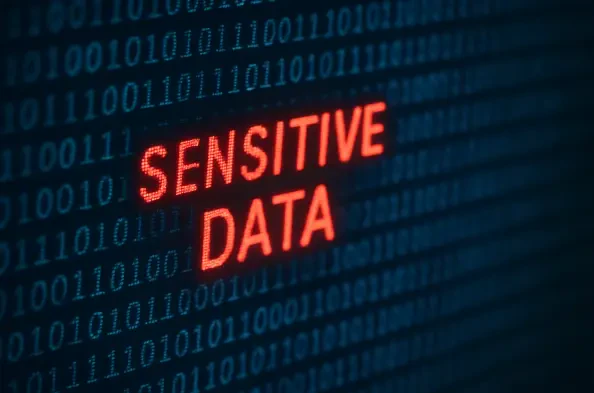In an alarming development for organizations relying on workflow management tools, a severe security vulnerability has surfaced in Apache Airflow version 3.0.3, jeopardizing the confidentiality of critical data and raising serious concerns about data protection in enterprise environments. This flaw, officially designated as CVE-2025-54831, enables users with mere read-only access to retrieve highly sensitive information such as passwords, database keys, and API tokens through both the platform’s API and web interface. Classified with an “important” severity level, this issue shatters the intended security barriers designed to protect such data under strict access controls. The breach not only undermines trust in a widely used tool for automating complex workflows but also highlights the persistent challenges in securing software systems against unauthorized access. As businesses increasingly depend on Airflow to manage sensitive operations, the discovery of this vulnerability serves as a stark reminder of the ongoing risks in digital infrastructure.
Unveiling the Vulnerability’s Scope
The root of this security issue lies in a flawed implementation of connection access controls within Apache Airflow 3.0.3, where protective mechanisms fail to shield sensitive data from unauthorized eyes. Despite the presence of a specific configuration setting meant to obscure critical fields like passwords from read-only users, the system does not enforce these restrictions. When such users access connection details through the API endpoint or navigate the web user interface, the platform inadvertently exposes highly confidential information. This lapse negates the “write-only” paradigm introduced in Airflow 3.0, which was intended to limit visibility of sensitive credentials to users with editing privileges. The consistent exposure of data across different access points highlights a significant breakdown in the security framework, leaving organizations vulnerable to potential exploitation by malicious actors who could leverage this flaw to gain unauthorized access to critical systems.
Further exploration into the vulnerability reveals that it is uniquely tied to version 3.0.3, with prior 2.x releases unaffected due to differing protocols for handling connection data. In those earlier versions, exposure of sensitive information to editors was a known and accepted behavior, unlike the stricter controls promised in the newer iteration. Apache’s security team detected this issue through irregularities in connection handling, uncovering an unintended reversal of safeguards meant to protect data integrity. The failure to restrict access as designed not only compromises individual organizations but also casts a shadow over the reliability of updates meant to enhance security. This situation underscores the importance of rigorous testing and validation before rolling out new versions of software that manage sensitive operations in high-stakes environments.
Impact on Organizational Security
The implications of this vulnerability extend far beyond a mere technical glitch, posing a tangible threat to organizations that depend on Apache Airflow for secure workflow orchestration. With sensitive connection details such as database access keys and API tokens laid bare to users lacking proper authorization, the risk of data breaches escalates significantly. Such exposure could enable attackers to infiltrate systems, extract proprietary information, or disrupt critical operations, leading to financial losses and reputational damage. The fact that this flaw circumvents the platform’s intended access restrictions reveals a deeper issue in maintaining trust in tools designed to handle confidential processes. For businesses operating in regulated industries where data protection is paramount, this vulnerability could result in compliance violations, further compounding the potential fallout from unauthorized access.
Moreover, the broader theme emerging from this incident centers on the critical need for robust access control mechanisms in software systems managing sensitive data. Apache Airflow’s widespread adoption across various sectors amplifies the urgency to address this flaw, as countless organizations could be at risk without immediate action. The incident serves as a cautionary tale about the complexities of securing intricate platforms against evolving threats. It also emphasizes the responsibility of software maintainers to ensure that security features function as intended, particularly when updates introduce new paradigms like restricted data visibility. Stakeholders must recognize that lapses like this can erode confidence in essential tools, prompting a reevaluation of how security is prioritized during development and deployment phases to prevent similar issues in future iterations.
Steps to Mitigate the Risk
Addressing this critical security flaw demands swift and decisive action from organizations utilizing Apache Airflow 3.0.3 in their operations. The most effective solution lies in upgrading to version 3.0.4 or later, where the vulnerability has been rectified, and proper access controls for sensitive connection data have been restored. This update reinstates the protective barriers that prevent read-only users from accessing confidential information, thereby reducing the risk of unauthorized exposure. Organizations are urged to prioritize this upgrade as part of their security protocols, ensuring that all instances of the affected version are patched without delay. Delaying this action could leave systems open to exploitation, especially in environments where sensitive data is a prime target for cyber threats seeking to capitalize on such weaknesses.
Beyond immediate remediation, this incident highlights the importance of proactive security practices in maintaining the integrity of workflow management tools. Organizations should consider implementing regular audits of software configurations to identify potential vulnerabilities before they can be exploited. Additionally, fostering a culture of vigilance around software updates and security advisories can help mitigate risks associated with newly discovered flaws. The resolution of this particular issue through a targeted update serves as a reminder that staying current with patches is a fundamental aspect of cybersecurity defense. Looking back, the response to this vulnerability demonstrates the value of rapid collaboration between software communities and users to restore trust and safeguard critical data against unauthorized access in an increasingly complex digital landscape.






